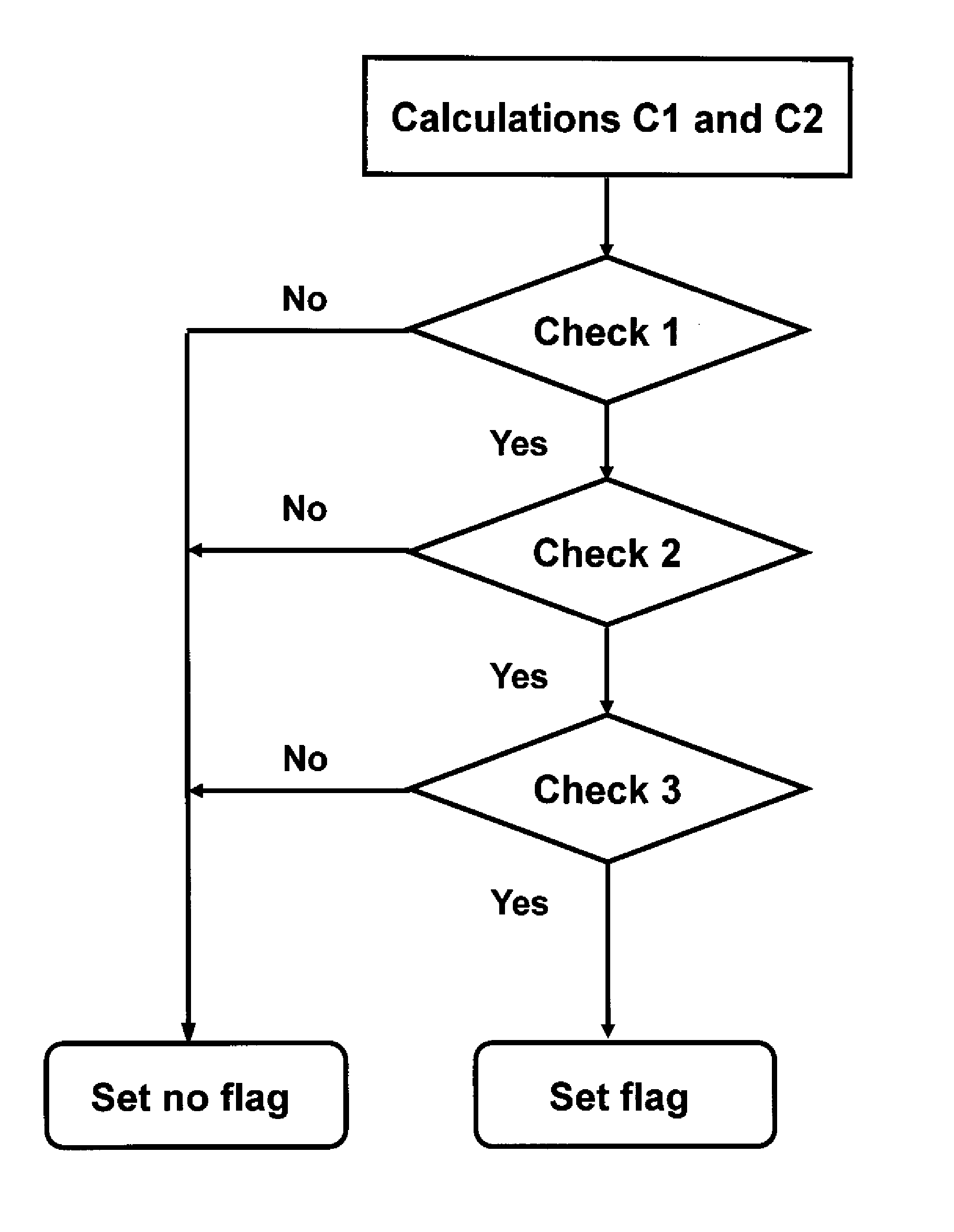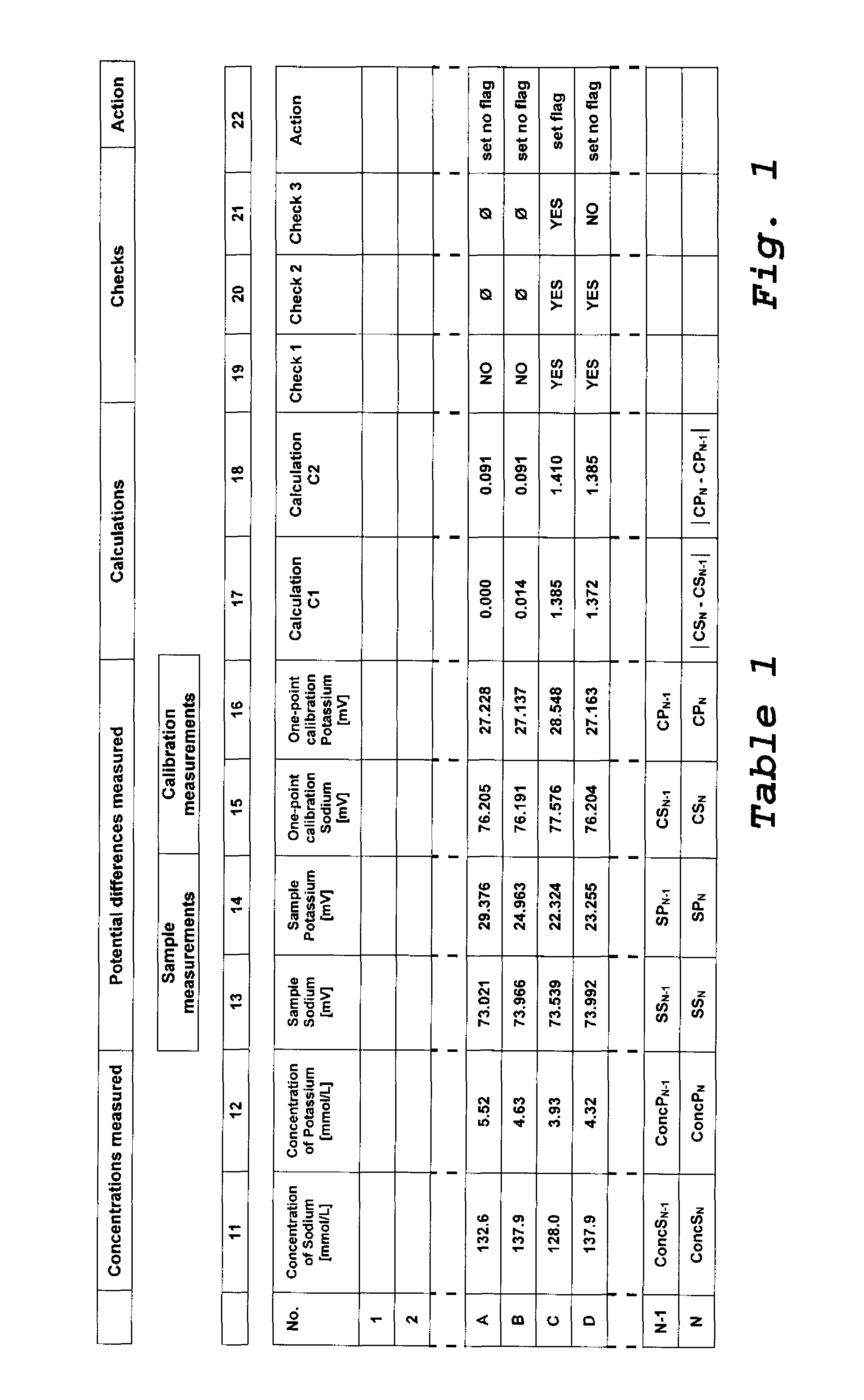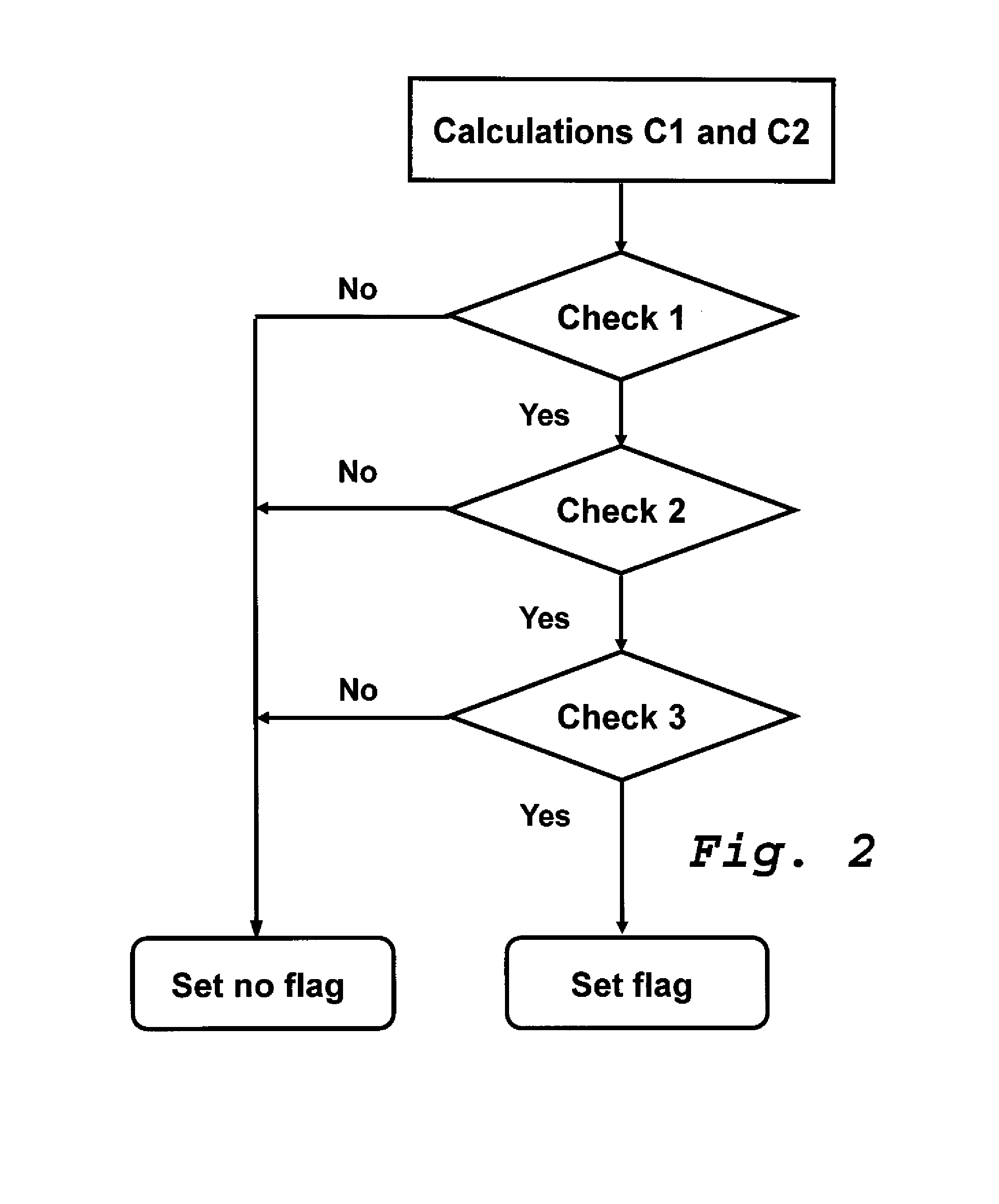Method for detecting erroneous measurement results obtained with ion-selective electrodes
a technology of ion-selective electrodes and ion-selective electrodes, which is applied in the field of analyzing biological liquid samples, can solve the problems of affecting the accuracy of the reported results, so as to prevent the reporting of questionable results as correct results.
- Summary
- Abstract
- Description
- Claims
- Application Information
AI Technical Summary
Benefits of technology
Problems solved by technology
Method used
Image
Examples
Embodiment Construction
[0052]The method described hereinafter as an example is a method for measuring the concentration of at least two analytes in a biological liquid sample by means of a set of ion selective electrodes each of which is suitable for measuring one of those analytes, one of those analytes being sodium and another of those analytes being potassium. This method includes steps for detecting deviations of potential differences measured which are caused by disturbances of the measurement conditions, e.g. air-bubbles in the sample channel of ion-selective electrodes or electrostatic discharges, and steps for marking with flags measurement results which are found doubtful.
[0053]FIG. 1 shows a table (Table 1) showing in columns 11 to 16 a list of results for measurement results obtained with ion-selective-electrodes for different samples and in columns 17 to 21 results of calculations and checks obtained with a method according to the invention. The measurement results indicated in columns 13 to 1...
PUM
| Property | Measurement | Unit |
|---|---|---|
| concentration | aaaaa | aaaaa |
| voltage | aaaaa | aaaaa |
| voltages | aaaaa | aaaaa |
Abstract
Description
Claims
Application Information
 Login to View More
Login to View More - R&D
- Intellectual Property
- Life Sciences
- Materials
- Tech Scout
- Unparalleled Data Quality
- Higher Quality Content
- 60% Fewer Hallucinations
Browse by: Latest US Patents, China's latest patents, Technical Efficacy Thesaurus, Application Domain, Technology Topic, Popular Technical Reports.
© 2025 PatSnap. All rights reserved.Legal|Privacy policy|Modern Slavery Act Transparency Statement|Sitemap|About US| Contact US: help@patsnap.com



